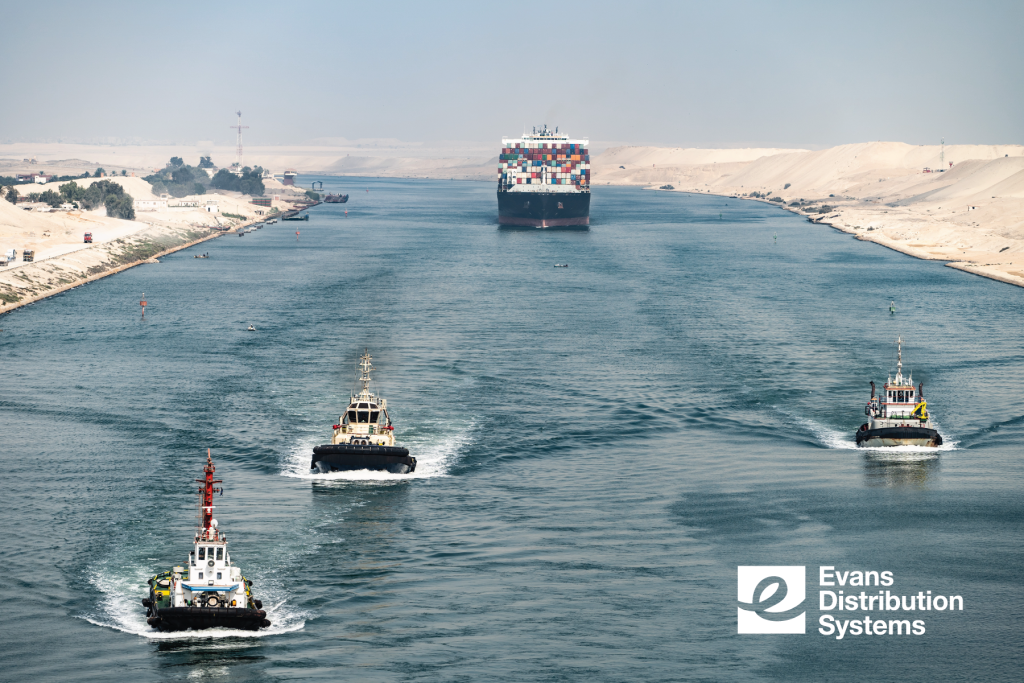The conflict on the Red Sea is sending shockwaves onto the global shipping community and beyond. The Yemeni-based Houthi rebel group is conducting missile and drone attacks on major cargo ships as they pass out the Suez Canal, which accounts for 15% of all seaborn trade. The Suez Canal is an artificial waterway that connects the Red Sea to the Mediterranean Sea, a critical access point to Asian, Western European, and U.S. trade routes.
The canal eliminates a 7,000-kilometer distance around the Cape of Good Hope which extends down to the southern tip of Africa, adding significant time and costs to shippers. However, the Suez is a narrow lane with sporadic passing points, making it an easy target for attacks once it reaches the Red Sea.

The Conflict
In November of 2023, the Houthi militant group launched a series of hijacks on commercial cargo ships using drones, missiles, and speed boats. It is reported that the attacks are a direct response to the Israeli and Hamas War on the Gaza Strip. The attacks on “Israeli” ships are a symbol of support to Hamas. However, many targeted ships are not from Israel.
The Impact
After several months and dozens of attacks, the conflict on the Red Sea is impacting the global supply chain. The obvious decision for shippers is to divert the 17,000 ships that pass through each year, away from the Suez Canal but that adds distance, time, and money. Traveling around the Cape of Good Hope takes roughly 34 days compared with 25.4 days through canal. These 9 additional days are costing shippers millions of dollars and reducing shipping capacity from extended voyages. Since December, it’s estimated that $200 billion in cargo has been rerouted.
According to the Wall Street Journal, by January 18 the conflict drove up 40-foot container pricing by 23%. Even long-term contracted shipping rates are getting hit with 20% surcharges related to the Red Sea conflict. Insurance companies are raising rates as well. Prices on consumer goods are expected to rise, as well as oil and inflation. Several European manufacturers like Tesla and Volvo have paused production in their plants due to inventory issues. From one end, delays can cause inventory shortages and on the other end, production halts because inventories are stacking up with nowhere to go. Many importers have shifted to air freight, which is also experiencing a surge during this time and disrupting flight routes.
With much of the world relying on the Middle East’s oil supply, the trucking industry will be impacted as well. According to Statista, the Middle East accounts for roughly 30 percent of the global oil supply producing 30.7 million barrels per day. As experienced in the past, oil shortages drive up prices including fuel, rates, and inflation.
The Voyage Ahead
Conflicts do not have an expiration date. Especially two interrelated conflicts. So far, the hardest hit route is from Asia to Europe, adding a median 2-week delay.
The US and UK have responded to the conflict with air strikes and naval security in the region, but the attacks have continued. The longer the attacks continue, the more expensive and the longer the delays will become.
